When planners speak of adding density, it can cause panicked imaginings of looming high rises, or built-over public parks. But sometimes, even when it can seem as if there isn’t a spare square inch of ground in our towns, there is still room to find an opportunity.
Darragh Scriven’s project, on one of the last remaining sites at Cork’s Mardyke Walk, is a case in point. The house sits in place of a former garage, at the back of an existing house on the Western Road. It’s a nice piece of continuity, in that those charming mews houses that you see in cities today, were once stables and coach houses for their larger neighbours. Substitute car for horse, and here you are: except in this case, the mews is a four to five bedroom pile, with a dramatically curved roof, on approximately 2,000 sq ft, rather than a bijou terraced two-bed.
The house at Mardyke Walk is a family affair. Blessed with a father and brother in the building trade, there had been talk about “doing something together one day”. Then, as Scriven wryly points out, “Covid gave us all a lot more time on our hands”. A house advertised on Daft, with planning for a second house on the site of its garage at the back, proved the ideal opportunity to get stuck in.
Cork’s Mardyke is a special spot. Sitting between two branches of the river Lee, and close to the University College Cork (UCC) campus, most of it is laid out in sports grounds, tennis courts, river walks, and Fitzgerald’s Park, which includes the Mardyke Gardens containing Diarmuid Gavin’s Chelsea Gold Award winning Sky Garden. All of this makes it surprising that the site of the original house, Sunview, had its back firmly turned to the park, something that is now rectified with the large windows and open views of the new build.
READ MORE
Having planning permission already lined up, and builders in the family, doesn’t necessarily mean it’s all going to be plain sailing however. Totting it up in his head, Scriven says that while Sunview itself cost €700,000, the family sunk at least another €450,000 into the build. “Probably more. The land in Cork city, especially in that part of the city, is very boggy,” he says. “We should have thought of it,” he adds ruefully. “We needed to put in very deep foundations and piling, which added to the costs and the timelines.”
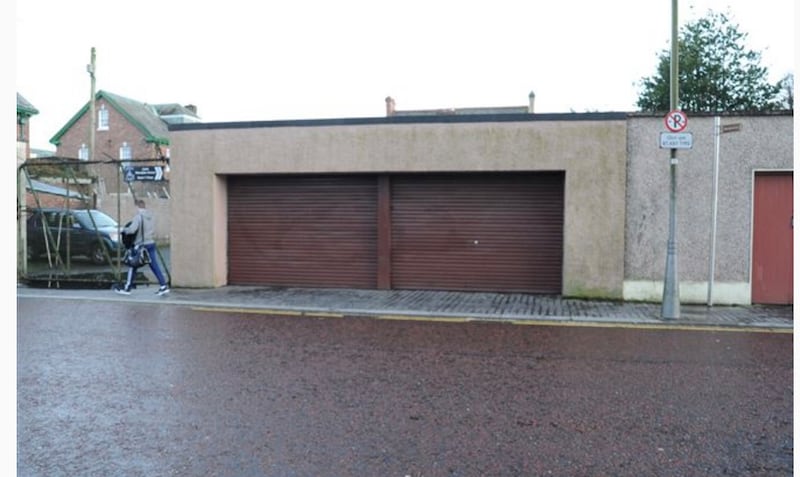
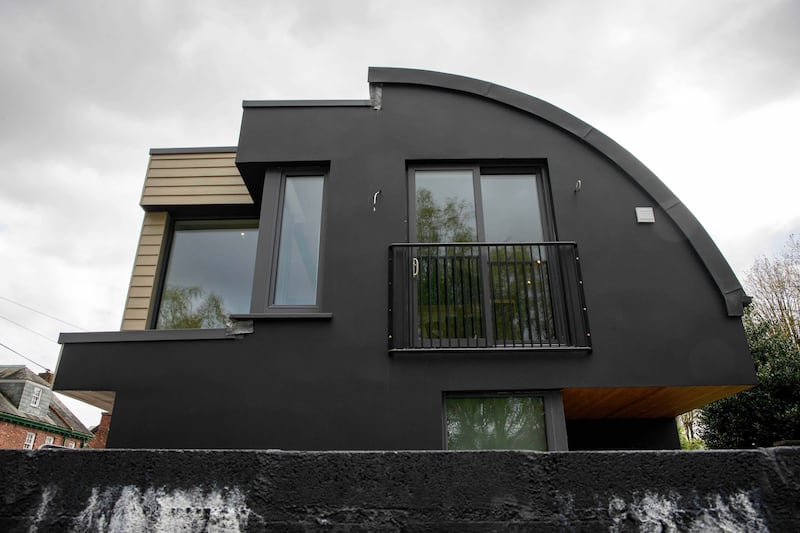
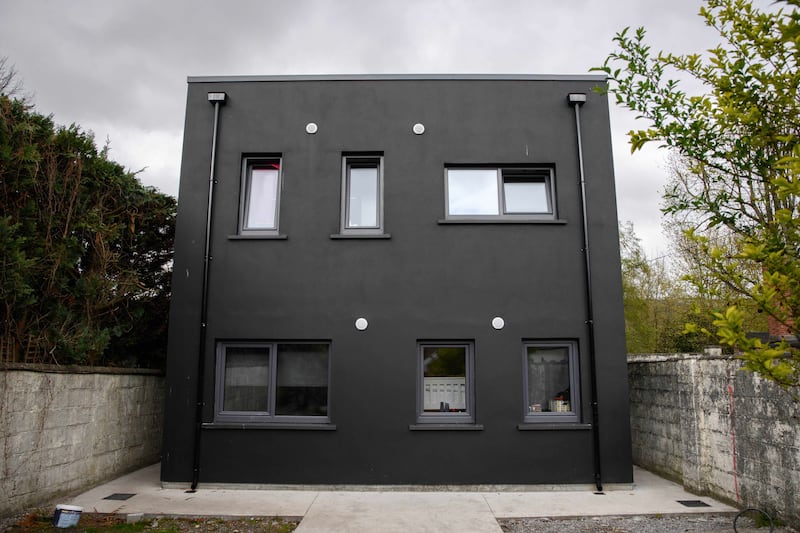
Money was raised via a mortgage between Scriven and his brother, Cormac, backed up by savings and assets, and the purchase went through in July 2021. Initially estimating about six months, the project ended up taking almost a year. On top of that, post-Covid supply chain issues and price increases added to what Scriven tactfully describes as “the challenges of the build”. So if a family of builders (at 26, Scriven himself is a recently graduated student, having studied management accounting at UCC) can be beset with delays and unforeseen “challenges”, what hope is there for the rest of us?
Plenty actually. First up, if you get the paperwork right, and make sure all agreements are written down with no room for ambiguity, going into a project with a second party halves your outlay. It obviously helps if you’re going to end up with two houses, and are clear about who is ultimately going to get which, but teaming up is a good start.
Whatever you’re planning, you’re going to have to make allowances for situations to happen. Allow a contingency for really bad things, so you’re prepared. But hope for the best
While Scriven’s father and brother are in the trade, they mainly oversaw the project, rather than building the house themselves. In fact, Cormac has more recently trained as a chef, and we joke that having building and cooking skills must put him pretty high on the leader board should we ever come to the apocalypse. Back in the real world, the Scrivens worked with local contractors and suppliers, and credit John Butt of BOK Engineers in Douglas, and Michael Sheehan Construction with making it all happen, alongside Cronin Electrical from Kilbrittain and plumber Rob McGarry.
“The key is to find a good builder that you can trust to take the lead on it,” says Scriven. But where can you find such a paragon? The answer might be under your nose. Word of mouth can be everything, so ask family, friends, colleagues and neighbours who have done a build or extension project for recommendations (as well as possibly dire warnings).
When approaching builders directly, ask for references in terms of recent projects, and follow them up. Even if you feel, in these times of scarcity, that you could scare a builder off by looking for endorsements, you’re still potentially saving yourself a great deal of costly anguish, so it’s well worth it.
“Whatever you’re planning,” Scriven says with the wisdom of experience, “you’re going to have to make allowances for situations to happen. Allow a contingency for really bad things, so you’re prepared. But hope for the best.”
Mardyke walk is a sensitive area, so planning could have been a hurdle, but the original listing for Sunview shows approved plans by Cork based firm Leahy & Associates, which provided the blueprint.
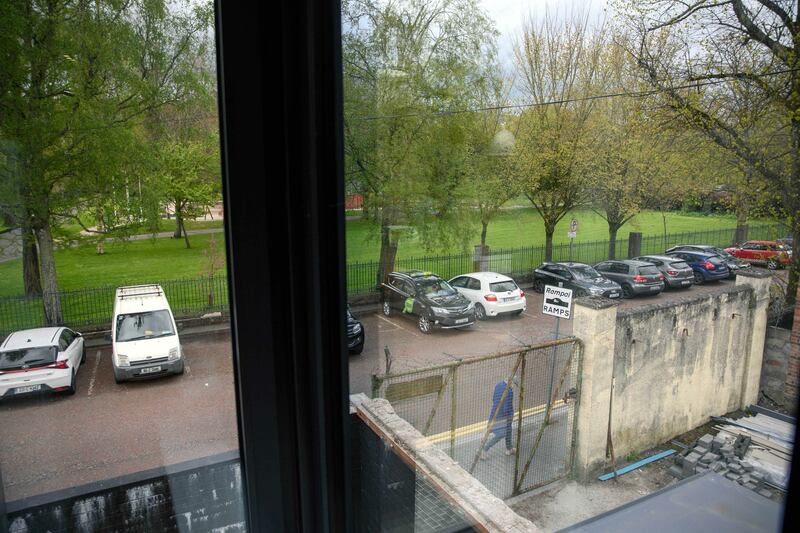
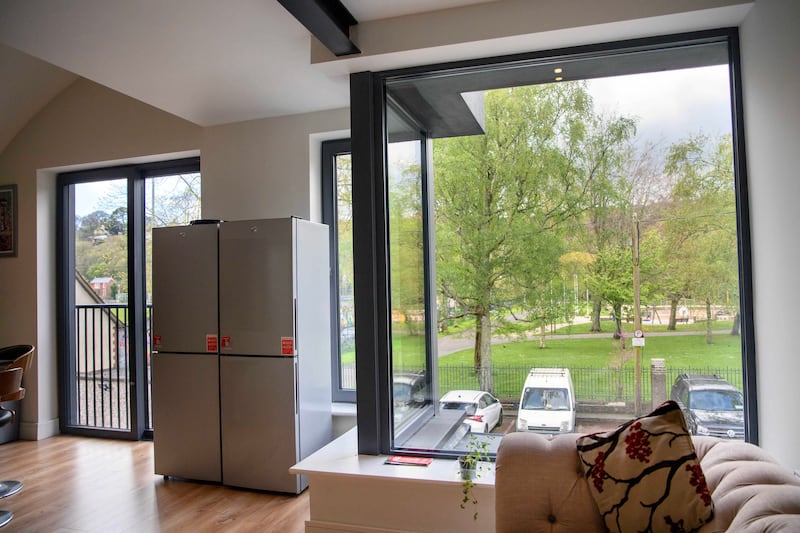
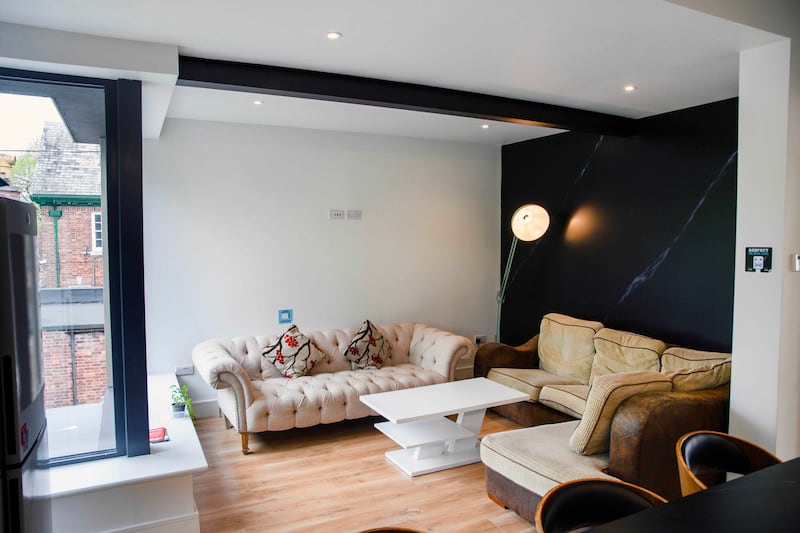
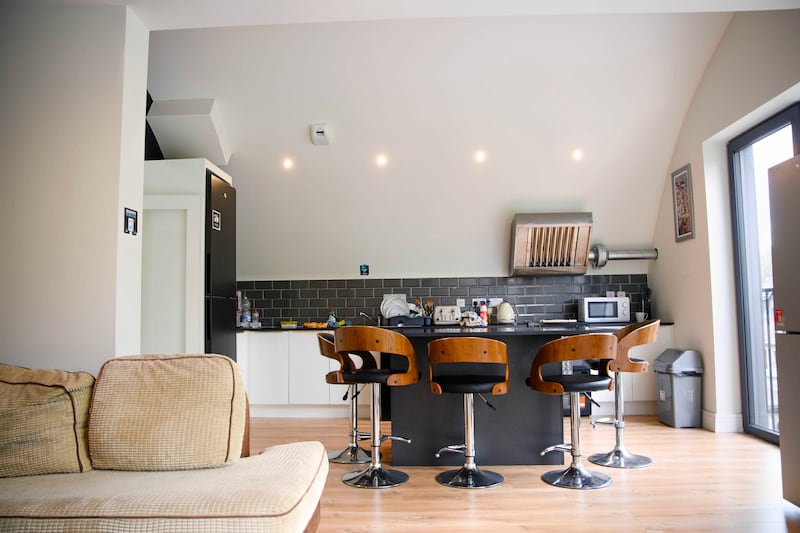
“The curved roof is obviously the most striking part of the building,” says Scriven. “The house is also laid out upside down, so the kitchen/living area is upstairs.” This is Scriven’s favourite space, and includes a kitchen from Classic Kitchens in Carrigaline, who also made the breakfast bar stools. It gives expansive views of Mardyke Walk and Fitzgerald’s Park through a large corner window (by Munster Joinery). There is also plenty of flexibility in the design. A room at garden level is currently a fifth bedroom, but could easily be a second livingroom, study or den.
The plans that will take you as far as planning permission are essentially for a shell, with room spaces marked out, so there are still plenty of decisions to be made. The location of plug sockets, light switches, and where you’re planning to put the television may seem like small details, but, as Scriven says, “you wouldn’t realise it until you’re doing it…” they can have a disproportionate impact on how you live.
There is a black theme running through the decor, including the striking exterior, and on a feature wall, where painter Robert Fiddes suggested picking up a marbling detail from the kitchen island countertop. It’s an inexpensive intervention that adds instant impact.
[ Residents’ bar: How a Mayo pub has become a home for three familiesOpens in new window ]
Another area that you don’t have to be in the building trade to save on is furnishings and fittings. “We’d be big on finding furniture on Done Deal,” says Scriven, who points out everything from lighting to floor tiles, to the coffee table and sofas in the main livingroom. You do need to devote a bit of energy to it, he agrees, but “if you’re willing to put in the time, it pays off”.
Both houses are currently rented out but, Scriven says, in the future, “me and Cormac probably have our eyes on them”. Given that the current value of the new house is estimated at €960,000, there’s plenty to eye up.




















